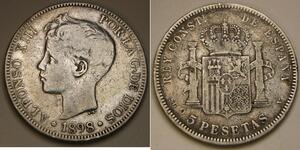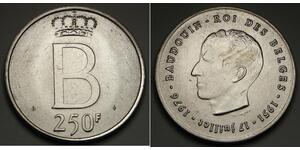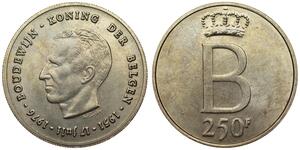100 Dollar Guyana Gold
Mint year: 1976 Condition: Proof! Mintage: 7,635 pcs. References: KM-47. Denomination: 100 Dollars – Commemorating the legendary “Golden Man” Composition: Gold (.500) Diameter: 25mm Weight: 5.8gm
El Dorado (pronounced [el doˈɾaðo], English: /ˌɛl dəˈrɑːdoʊ/; Spanish for “the golden one”), originally El Hombre Dorado (the golden man), or El Rey Dorado (the golden king), was the term used by the Spanish Empire to describe a mythical tribal chief (zipa) of the Muisca native people of Colombia, who, as an initiation rite, covered himself with gold dust and submerged in Lake Guatavita. The legends surrounding El Dorado changed over time, as it went from being a man, to a city, to a kingdom, and then finally an empire.
A second location for El Dorado was inferred from rumors, which inspired several unsuccessful expeditions in the late 1500s in search of a city called Manõa on the shores of Lake Parime. Two of the most famous of these expeditions were led by Sir Walter Raleigh. In pursuit of the legend, Spanish conquistadors and numerous others searched Colombia, Venezuela, and parts of Guyana and northern Brazil for the city and its fabulous king. In the course of these explorations, much of northern South America, including the Amazon River, was mapped. By the beginning of the 19th century most people dismissed the existence of the city as a myth.
The Commonwealth realm of Guyana, officially known as “Guyana”, was a predecessor to the modern-day Guyana and an independent state that existed between 26 May 1966 and 23 February 1970.
British rule ended in 1966, when Guyana was given independence as a Commonwealth realm by the Guyana Independence Act 1966 which transformed British Guiana into the independent sovereign constitutional monarchy of Guyana with the British monarch as head of state. Guyana shared the Sovereign with the other Commonwealth realms, and the monarch’s constitutional roles were mostly delegated to the Governor-General of Guyana. The royal succession was governed by the English Act of Settlement of 1701. The following governors-general held office in Guyana during the dominion period:
- Sir Richard Luyt (26 May 1966 – 16 December 1966)
- Sir David Rose (16 December 1966 – 10 November 1969)
- Sir Edward Luckhoo (10 November 1969 – 1 July 1970)
Elizabeth II did not reside in or visit Guyana during its time as a Commonwealth realm.
The Republic of Guyana came into existence on 23 February 1970,3 when Guyana became a republic within the Commonwealth.
Forbes Burnham held office as prime minister (and head of government) of Guyana during this period. Following the abolition of the monarchy, former Governor-General Sir Edward Luckhoo provisionally became the first President of Guyana.
(1537 X 733 pixels, file size: ~210K)
Posted by: anonymous 2017-09-28
1977, Guyana (West Indies). Gold 100 Dollars "El Dorado/Golden Man" Coin. 5.8gm! Mint year: 1976 Condition: Proof! Mintage: 7,635 pcs. References: KM-47. Denomination: 100 Dollars - Commemorating the legendary "Golden Man" Composition: Gold (.500) Diameter: 25mm Weight: 5.8gm El ...
(805 X 400 pixels, file size: ~75K)
Posted by: gcoins 2010-08-24
Гайана 100 долларов (1977 г.) Золото Номер по Краузе # 47, 500-я проба, 5,58 г.
5 Peseta Kingdom of Spain (1874 - 1931) Silver
group has 46 coins / 42 prices
⇑
250 Franc Belgium Silver Leopold III of Belgium
group has 7 coins / 7 prices
⇑

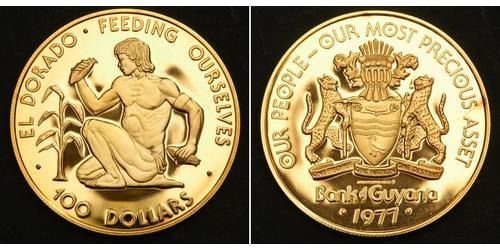
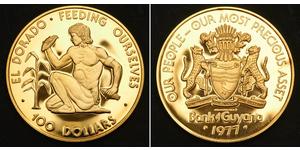
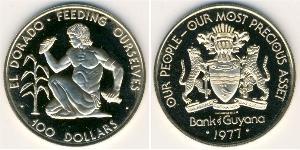




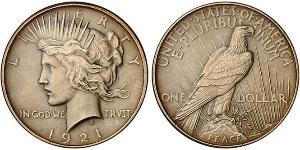
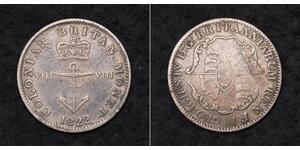
-300-150-0_0KbzbiCikAAAFL8oijltio.jpg)
